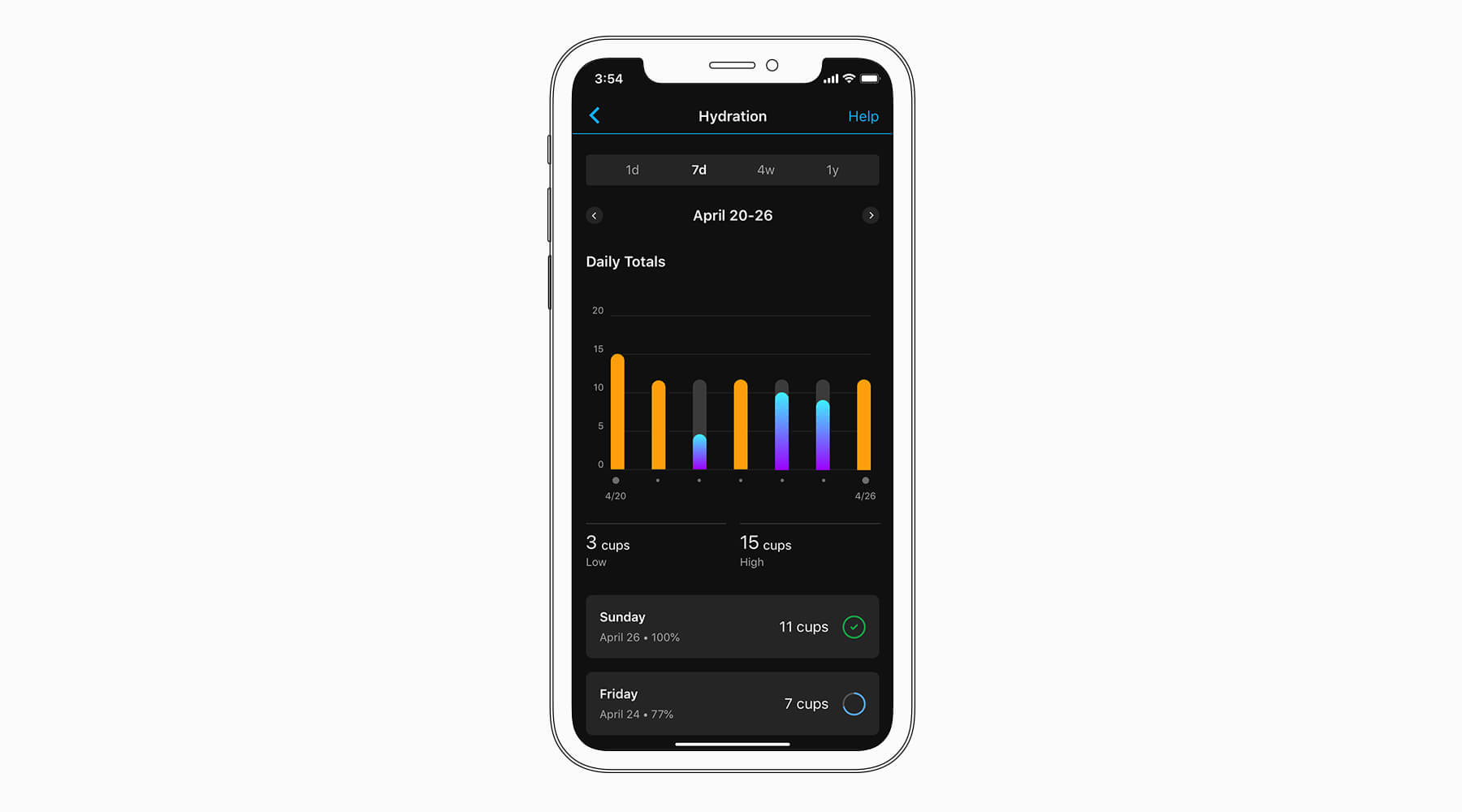
Your body needs water to survive. After all, water makes up approximately 60% of your body weight. The benefits of staying hydrated cannot be overstated. They include the following:
Your Garmin device will set a default daily hydration goal based on your gender. This goal is derived from the recommendations of several credible health organisations, including the U.S. National Academy of Sciences. This goal is intended to guide your water intake through liquid consumption only, not food. Here’s a fun fact: on average, 20% of your water intake comes from food.
You can use this default goal or create your own. If you choose the auto goal option, your hydration goal will increase dynamically based on estimated sweat loss for timed activities you perform. Sweat loss is estimated by analysing exertion and the ambient temperature.
In general, thirst is a good indicator of when to hydrate. The colour of your urine can also be used as a guide. Anything bright yellow or darker means you need to hydrate. Of course, you’re likely to get thirsty more quickly and frequently while you’re active. Consider hydrating before, during and after activity to avoid dehydration.
It’s best to drink moderate amounts of liquid throughout the day rather than consume large amounts all at once. If you’re participating in intense or long-duration activities, try to balance water with sports drinks, which help prevent electrolyte depletion. Electrolyte depletion can lead to cramping or more severe symptoms in rare instances.
While water is often regarded as the best choice for hydration, the reality is that almost any non-alcoholic liquid is acceptable. Caffeinated beverages produce a moderate diuretic effect, but their net impact is hydrating rather than dehydrating.
